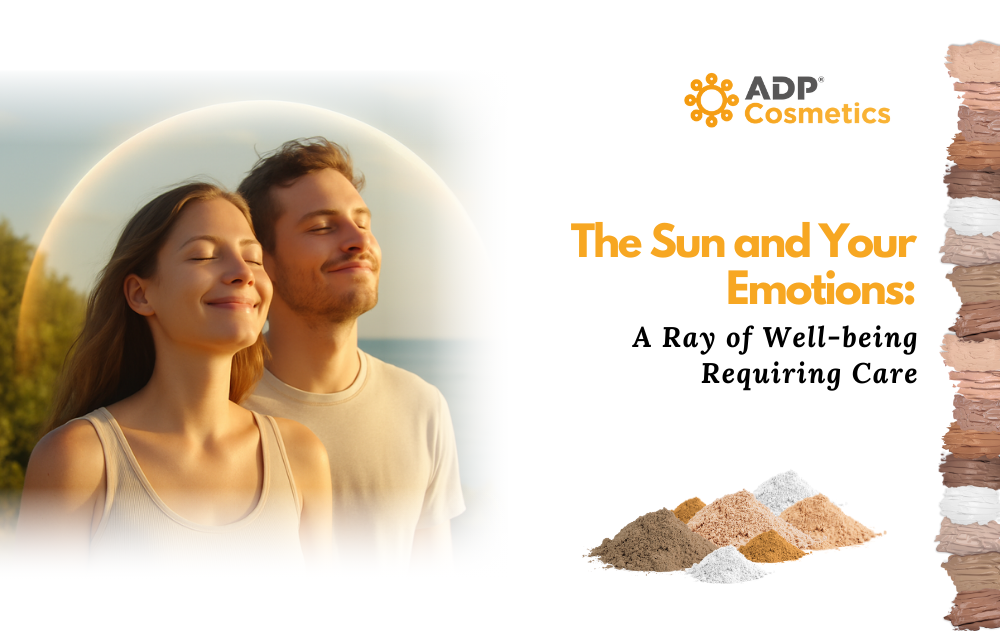The Sun and Your Emotions: A Ray of Well-being That Requires Care
It’s common to associate the sun with moments of joy, vitality, and well-being. And science supports this intuitive connection. Exposure to sunlight triggers biological processes in our bodies that can positively influence our mood. However, this relationship between the sun and our emotions goes hand in hand with the fundamental need to protect our skin from its potentially harmful effects.
The Sun as a Mood Ally:
Various studies have explored how sunlight impacts our mental health. A study published in the Journal of Affective Disorders investigated the relationship between sun exposure and depressive symptoms in women. The findings suggested that greater exposure to sunlight was associated with a lower likelihood of experiencing depressive symptoms, pointing to a potential role of sunlight in mood regulation (Lambert et al., 2002).
Another study focused on the impact of bright light on people with seasonal affective disorder (SAD). The results indicated that bright light therapy was effective in reducing depressive symptoms in individuals with SAD, underscoring the powerful influence of light on mood regulation in this type of depression (Eastman et al., 1998).
In addition to its direct effect on mood, sun exposure also plays a crucial role in the synthesis of vitamin D in our bodies. While its primary function is related to bone health, studies suggest a possible link between adequate vitamin D levels and a lower risk of depressive symptoms. A systematic review published in the British Journal of Psychiatry explored this connection, although it acknowledges that the causal relationship still requires further research (Anglin et al., 2013).
The Dual Nature of the Sun: Benefits and Risks:
While the positive effects of the sun on our emotions are significant, it’s crucial to recognize and understand the risks associated with unprotected sun exposure. Ultraviolet (UV) radiation emitted by the sun can cause short-term and long-term skin damage. Sunburn, premature skin aging, and, most concerningly, an increased risk of skin cancer are direct consequences of excessive and careless sun exposure (Narayanan et al., 2010).
UV radiation is primarily classified into UVA and UVB. UVB rays are mainly responsible for sunburn, while UVA rays penetrate deeper into the skin and contribute to premature aging and genetic damage that can lead to skin cancer. Furthermore, high-energy visible light (HEVL or blue light) and infrared (IR) radiation are also being studied for their potential effects on the skin.
A Smart Balance: Enjoying the Sun with Protection:
At ADP Cosmetics, we promote a conscious and balanced approach to sun exposure. We recognize the benefits the sun can bring to our emotional well-being, while prioritizing the protection of your skin’s health. We believe it is possible to enjoy the sun’s rays safely and responsibly.
The key lies in adopting effective photoprotection measures. This includes the regular use of broad-spectrum sunscreens that offer robust defense against UVA and UVB radiation. Additionally, choosing sun filters that also protect against HEVL and IR light can be beneficial.
Our line of mineral UV filters is designed with your health and environmental care in mind. Based on zinc oxide and titanium dioxide, our filters act as an effective physical barrier against solar radiation. They are a safe option for all skin types and are also considered ocean-friendly, minimizing their impact on marine ecosystems.
Enjoying the sun’s benefits for our emotions should not compromise our skin’s health. By integrating photoprotection into our daily routine, we can harness that “ray of joy” the sun provides, protecting ourselves from its potential harmful effects and contributing to a healthier future for ourselves and the planet.
Sources:
Eastman, C. I., Rueger, M., & Martins, A. N. (1998). Bright light treatment of winter depression. Archives of General Psychiatry.
Lambert, G. W., Reid, K. J., Kaye, J., & Jennings, G. L. (2002). Effect of sunlight and season on serotonin turnover in the brain. The Lancet.
Anglin, R. E. S., et al. (2013). Vitamin D and depression: systematic review and meta-analysis. British Journal of Psychiatry.
Narayanan, D. L., Saladi, R. N., & Lowe, N. J. (2010). Ultraviolet radiation and skin cancer. International Journal of Dermatology.










